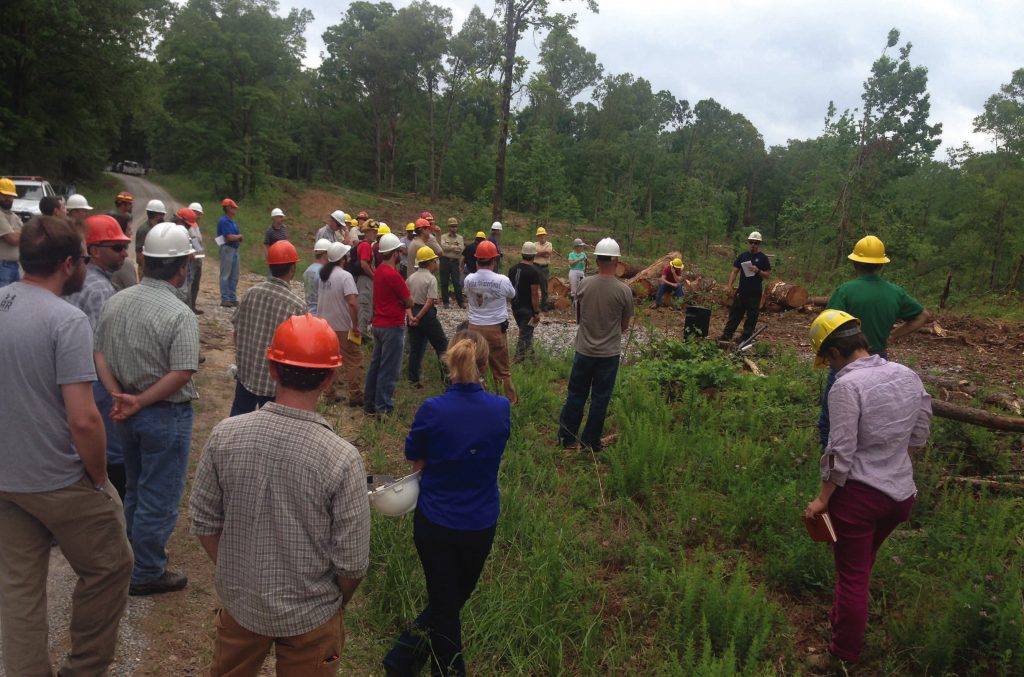Connecting The Dots
One property links to the next and continues a chain of wildlife habitat continuity when managed properly. How can the NWTF and its partners help you enhance your piece of the puzzle?
“Multiple dots on a regional map.” That’s how Doug Little, NWTF director of conservation operations (East Region), describes how he and other NWTF field staff track the many wildlife habitat improvement projects underway from Maine to Florida, west to Arkansas, and northward to Kentucky.
“Across that territory, our NWTF private land biologists and foresters are working with local landowners to accomplish important work,” Little said. “In New York, for example, one of our three focus areas relate increasing young forest habitat next to good brooding habitat. While this helps turkey hens and their poults, it also benefits the New England cottontail and American woodcock.
“In Louisiana, one dot in the west-central part of the state, marks where landowners are partnering with various agencies to manage, restore and improve longleaf pine habitat. The work involves planting, thinning and prescribed burns. We (NWTF) not only advise these landowners, but we also help them apply for federal and other funding.”
Jared McJunkin, NWTF director of conservation operations (Central Region), cites projects from Texas to the Dakotas and eastward to Ohio. This work is often accomplished in partnership with state wildlife and forestry professionals and federal agencies such as the U.S. Fish and Wildlife Service and the USDA Natural Resources Conservation Service.

“We cannot get landscape-level conservation delivered in the Central Region, or elsewhere for that matter, without engaging willing landowners,” McJunkin said. “Private landowners are critical to cross-boundary stewardship of our nation’s forests, riparian areas and grasslands — not only improving wildlife habitat, but also helping reduce the risk of catastrophic wildfires while improving water quality.”
Privately owned land abounds across Central Region states and providing technical assistance to private landowners is a significant component of the NWTF’s conservation delivery effort here. In Missouri and Illinois, for example, the NWTF has several staff members, predominantly foresters, that are supported via NRCS and Forest Service partnerships. They provide direct technical assistance and collaborate with other conservation groups in developing virtual and in-person workshops and field days designed to increase awareness of financial and technical resources available for private landowners.
“NWTF staff are great resources for answering questions not only about best managing habitat for wild turkeys and other game animals but also related to improving private lands for pollinators and nongame species,” McJunkin said.
Patt Dorsey, NWTF director of conservation operations (West Region), admits that due to the amount of public land in the region, private lands there often don’t receive the attention they deserve. Yet, while the amount varies widely from state to state, on average about half of the land in the American West is privately owned.
“In the big picture, private landowners are critical for forest and watershed health and for wildlife habitat,” Dorsey said. “Many of the key parcels are private. The work is more complex because there are more, smaller landowners. That’s why we rely on partners.”
Dorsey said the NWTF invests in the West directly through the NRCS and the National Forestry Initiative, with foresters now available to help in Idaho, Montana, Wyoming and Washington.
The sheer scope of the landscape, coupled with mounting habitat challenges, including wildfires and water shortages, amplifies the need for interagency relationships, increased collaboration and occasional creative thinking, Dorsey said.
“Forest and watershed health confronted by wildfire concerns are driving much of the work in the West,” she said. “‘Mega-fires’ are stressing the importance of working across public/private land boundaries. Our mission and our values are always out front. With those forever in focus, we work with state forestry agencies, local conservation districts and other conservation-minded groups to keep the West a haven for wild turkeys.”
So, dots on maps can be important references. If your property might be a potential dot, reach out to your local NWTF regional professional. Those dots interconnect into something bigger and, after all, healthy habitats translate into healthy harvests.
